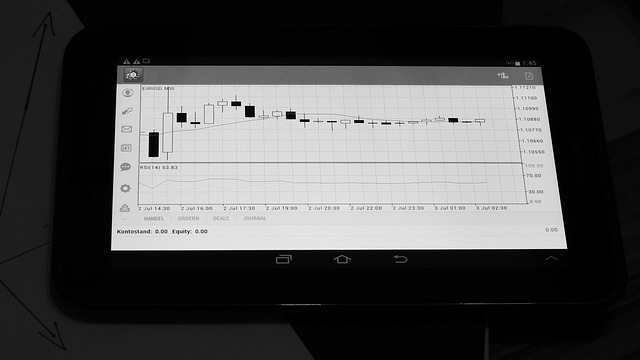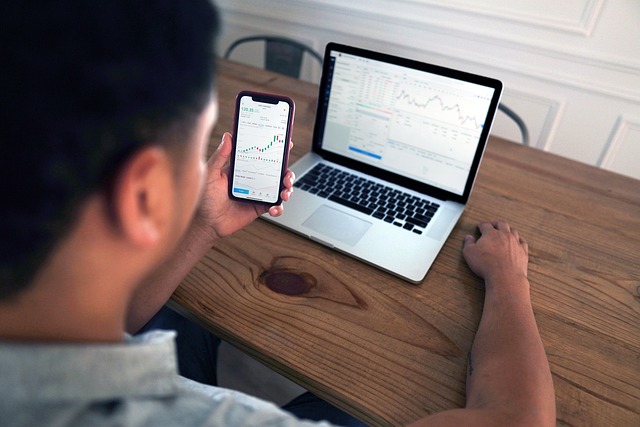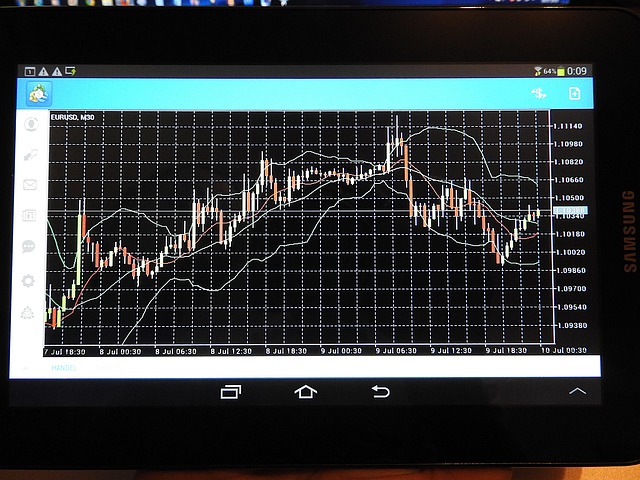Choosing the Best Forex Trading Software for Windows: Complete Guide
Author: Jameson Richman Expert
Published On: 2025-11-05
Prepared by Jameson Richman and our team of experts with over a decade of experience in cryptocurrency and digital asset analysis. Learn more about us.
Forex trading software for Windows powers millions of retail and professional traders by combining real-time market data, charting, automated strategies, and broker connectivity into one desktop environment. This guide explains what Windows-based forex platforms do, compares the top options, details features to prioritize, and shows practical setup and security steps so you can choose and optimize the software that matches your trading goals.

Why choose forex trading software for Windows?
Windows remains the dominant desktop platform for active traders because it supports powerful native applications, low-latency brokers, third-party integrations, and automation tools (Expert Advisors, custom indicators, and APIs). Unlike mobile or purely web-based tools, native Windows software can take full advantage of multi-core processors, local storage for large historical datasets, and direct access to specialized peripherals like multi-monitor setups and dedicated network interfaces.
Before we dive deeper, if you trade digital assets alongside FX or build cross-market strategies, these resources may be useful reading: a TradingView alert setup guide for advanced notifications (TradingView 2.0 Price Alerts — Ultimate Setup Guide), and an article on crypto arbitrage strategy (Best Crypto Arbitrage Bot — Top Picks and Strategy).
Key benefits of Windows-based forex platforms
- Performance: Native apps usually offer lower latency and faster chart rendering than web apps.
- Automation: Full support for automated strategies, backtesting engines, and plugins.
- Rich toolsets: Advanced charting, multi-timeframe analysis, heatmaps, and market scanners.
- Integration: Connect to VPS, data feeds, DLLs, and third-party software (Excel, Python APIs).
- Customization: Install custom indicators, strategy scripts, and tailor workspaces to multi-monitor setups.
Top forex trading software for Windows: comparison
The right software depends on your trading style: manual, discretionary, algorithmic, or a mix. Below are popular Windows platforms with strengths and tradeoffs.
MetaTrader 4 (MT4)
MT4 is the longest-established retail FX platform. It’s lightweight, widely supported by brokers, and ideal for running Expert Advisors (EAs).
- Strengths: Huge indicator/EAs marketplace, stable, low resource usage.
- Weaknesses: Aging architecture, limited native multi-threading, less advanced for non-FX assets.
- Best for: Forex traders using EAs and standard broker integrations.
MetaTrader 5 (MT5)
MT5 is the successor to MT4 and supports more asset classes (stocks, futures), a built-in strategy tester with multi-threaded backtesting, and a more modern marketplace.
- Strengths: Multi-asset support, improved backtester, better order types.
- Weaknesses: Not all brokers fully support MT5 features; some legacy EAs target MT4 only.
- Best for: Traders expanding beyond FX, advanced backtesting, or who need a more modern environment.
cTrader
cTrader focuses on ECN/STP trading with robust depth-of-market (DoM), fast execution, and the cAlgo (cTrader Automate) environment for algorithmic strategies written in C#.
- Strengths: Clean UI, DoM, advanced risk controls, modern API in C#.
- Weaknesses: Smaller marketplace than MetaTrader; fewer brokers have deep cTrader liquidity.
- Best for: Professional traders who prefer C# programming and transparent ECN-style execution.
NinjaTrader
NinjaTrader is popular for futures and equities but supports forex via connected brokers and third-party bridges. It offers advanced strategy building, a powerful charting engine, and extensive market replay tools.
- Strengths: Advanced strategy development, market replay, high customization.
- Weaknesses: Learning curve; licensing costs for full features.
- Best for: Traders focused on futures, multi-asset strategies, or those needing in-depth order management.
TradingView (Windows app and web)
While primarily web-based, TradingView offers a Windows desktop app with excellent charting, social ideas, and alert systems. It integrates with brokers and can be a hybrid choice.
- Strengths: Best-in-class charts, community scripts (Pine Script), cross-device sync.
- Weaknesses: Automation and execution capabilities depend on broker integrations and third-party bridges.
- Best for: Technical analysts who value charts and social validation; pair with execution platforms for live trading.

Features to prioritize when evaluating forex trading software for Windows
When comparing platforms, ask whether they provide these essential capabilities:
- Reliable real-time data and low-latency execution: Millisecond-level execution matters for scalping strategies. Check the software’s routing and whether it supports IB/ECN connections.
- Robust strategy tester and backtesting: Multi-threaded backtesting and walk-forward testing reduce curve-fitting risk. MT5 and some third-party testers excel here.
- Automation and API access: Does the platform support EAs, automated scripts, or a native API (C#, Python, MQL)?
- Order types and risk controls: Advanced order types (partial fills, OCO, trailing stops) and risk limits help execute complex strategies safely.
- Indicator library and customization: Can you install custom indicators and create strategies visually or through code?
- Broker connectivity and compatibility: Confirm your chosen broker supports the platform natively — this affects spreads, execution, and slippage.
- Data export and analytics: Ability to export trade logs, tick data, and performance metrics for external analysis.
- Stability and support: Frequent updates, active communities, and good customer support reduce downtime and troubleshooting time.
How to choose the best platform for your trading style
Match platform strengths to your objectives:
- Scalpers: Prioritize ultra-low latency, ECN brokers, and platforms with direct market access (cTrader or low-latency MT4 bridges).
- Day traders: High-quality charting, hotkeys, and quick order entry; multi-monitor workspaces help.
- Swing traders: Strong analytics, screening tools, and strategy testers are more important than micro-latency.
- Algorithmic traders: Choose platforms with mature APIs (MT5, cTrader Automate, NinjaTrader) and good backtesting.
- Multi-asset traders: MT5 and TradingView provide broader asset coverage beyond FX.
Practical setup: installing and optimizing trading software on Windows
Follow these steps to get a clean, high-performance Windows trading setup.
1. System requirements and recommended hardware
- Windows 10 or later (64-bit). Keep Windows updated for security patches.
- CPU: Quad-core 2.5 GHz or faster (higher core counts help multi-threaded backtests).
- RAM: 16 GB minimum; 32 GB recommended for heavy backtesting and large tick datasets.
- Storage: SSD for OS and platform installation; additional NVMe for large historical databases.
- Network: Wired Ethernet with a low-latency ISP; consider redundant connection or failover.
- Monitors: Multiple displays (2–4) improve chart management and order monitoring.
2. Installation best practices
- Install the trading platform and verify the digital signature to ensure authenticity.
- Install one platform at a time and create system restore points before major changes.
- Use separate user accounts for trading and general browsing to reduce exposure.
- Configure anti-virus to whitelist platform folders to avoid real-time scanning slowdowns (but keep protections enabled).
3. Network and latency optimization
- Close bandwidth-heavy applications (cloud sync, streaming) during active sessions.
- Use an Ethernet connection rather than Wi‑Fi whenever possible.
- For automated strategies, consider hosting a VPS near your broker’s servers to reduce latency and maintain uptime.
4. Backup, logging, and disaster recovery
- Enable daily trade log exports and backup strategy code to remote secure storage.
- Document platform settings (server, login, chart templates) so you can restore quickly after a system failure.
- Test failover scenarios using a VPS or alternate laptop to ensure you can access accounts if your primary machine fails.

Automation, EAs and APIs: building reliable strategies
Automation differentiates professional-grade setups from manual-only systems. Here’s how to approach automated strategy development on Windows.
Development workflow
- Define rules: Entry, exit, risk per trade, position sizing, and maximum daily loss.
- Backtest on high-quality data: Tick-level data where possible; MT5 provides better backtesting than MT4 for multi-threading.
- Walk-forward and out-of-sample testing: Validate robustness and avoid curve fitting.
- Forward test on demo accounts or a small live allocation: Paper trade on the same spread and conditions as your live broker. For paper trading specifics and limitations, see this article on Robinhood paper trading (Does Robinhood Allow Paper Trading? What Traders Need).
- Deploy to VPS: Use a reliable VPS after successful forward testing to ensure 24/7 uptime.
Common automation pitfalls
- Ignoring slippage and spread widening during news events — simulate realistic execution costs.
- Using low-quality tick data for backtests leading to over-optimistic results.
- Failing to implement sane risk controls like maximum daily drawdown limits.
Security and regulatory considerations
Security is critical when trading on Windows. A hacked workstation can lead to account compromise and financial loss. Also, ensure your broker is regulated in your jurisdiction.
- Use strong, unique passwords and enable two-factor authentication (2FA) for your broker and exchange accounts.
- Keep Windows and trading software updated to patch vulnerabilities.
- Use reputable brokers with transparent order execution and clear regulatory oversight. Check regulatory bodies like the National Futures Association (NFA) or national securities regulators.
- Run frequent malware scans and avoid downloading unknown indicators or EAs from untrusted sources.
- Consider hardware security modules or secure password managers to store credentials.
For background on the foreign exchange markets and institutional structure, see the Foreign Exchange Market overview on Wikipedia (Foreign Exchange Market — Wikipedia) and BIS research (Bank for International Settlements).
Choosing a broker and connectivity for Windows platforms
Your choice of broker is as important as the software itself. Brokers differ by spreads, execution model (market maker vs ECN), margin policies, and supported platforms (MT4/MT5/cTrader/direct API).
- Confirm which platforms the broker supports natively.
- Check for low latency servers and, if needed, colocated VPS options.
- Review margin, swaps, and commission structures for your trading style.
- Read user feedback and third-party performance metrics to verify execution quality.
If you trade crypto assets in addition to FX, you may want accounts on major exchanges for liquidity and hedging. Popular platforms include Binance (Register Binance), MEXC (Register MEXC), Bitget (Register Bitget), and Bybit (Register Bybit). These can be useful for cross-asset strategies and liquidity arbitrage.

Real-world examples and setups
Example 1 — Retail EA trader (MT4 + VPS)
Setup:
- Windows 10 laptop for monitoring, VPS hosted in the broker’s region for uptime.
- MT4 with an optimized EA that risks 0.5% per trade.
- Backtesting on tick data (2018–2024), walk-forward testing, then demo forward test for 3 months.
- Failover: Hot backup VPS with same EA and synchronized logs.
Example 2 — Multi-asset technical analyst (MT5 + TradingView)
Setup:
- MT5 for order execution and algorithmic testing; TradingView desktop for charting and idea generation.
- TradingView alerts sent to desktop and mobile; incorporate TradingView alert guide for advanced setups (TradingView 2.0 Price Alerts Guide).
- Use a broker bridge to send TradingView signals to MT5 for execution, or a simple Telegram/email-based execution assistant.
Example 3 — Crypto/FX hybrid arbitrage (API-driven)
Setup:
- Windows server running automated scripts (Python/C#) that connect to FX brokers and crypto exchanges like Binance, Bitget, Bybit, and MEXC for cross-market hedging and arbitrage. Learn more about crypto arbitrage strategies (crypto arbitrage bot strategy).
- Use exchanges’ official APIs and signed keys stored in secure vaults.
- Implement latency monitoring, order book snapshots, and risk controls to avoid exposure during API outages.
Backtesting and performance measurement: what metrics matter?
A robust backtesting and performance framework turns historical results into actionable insights:
- Net profit and drawdown: Maximum drawdown and time-to-recovery are essential risk indicators.
- Sharpe and Sortino ratios: Risk-adjusted return measures—useful for comparing strategies.
- Win rate and expectancy: Expectancy = (win% × avg win) − (loss% × avg loss).
- Slippage and commission modeling: Include realistic transaction costs for conservative expectations.
- Monte Carlo simulations: Test for sequence risk and variability in returns.
Maintenance and ongoing optimization
Trading software is not “set and forget.” Continuous improvement includes:
- Review trades weekly and monthly to spot recurring problems.
- Recalibrate strategy parameters with out-of-sample data and when market regimes change.
- Keep software and indicator libraries updated; maintain version control for code.
- Monitor broker performance — spreads, slippage, and execution quality can change over time.

Common mistakes to avoid
- Overfitting strategies to historical data without forward testing.
- Choosing software solely by popularity rather than fit to your workflow.
- Neglecting security: using weak passwords, not enabling 2FA, or running untrusted EAs.
- Underestimating the role of transaction costs, especially for high-frequency strategies.
Further reading and resources
Expand your trading knowledge with these curated resources:
- Forex market structure and statistics — Foreign Exchange Market — Wikipedia.
- Educational articles and definitions — Investopedia: Forex.
- Regulatory guidance and broker checks — National Futures Association (U.S.).
- Market outlook and cross-asset perspectives — see crypto market analyses such as Bitcoin price forecasts and trading plans (Bitcoin Price Prediction — End of January 2025) and “what crypto to buy now” strategies (What Crypto to Buy Now — Coinbase Top Picks).
- Paper trading nuances — Does Robinhood Allow Paper Trading?
Checklist: selecting and deploying your forex trading software for Windows
- Define your trading style and objectives (scalper, swing, algo, multi-asset).
- Identify must-have features (automation, backtesting, DoM, APIs).
- Shortlist platforms (MT4/MT5, cTrader, NinjaTrader, TradingView desktop).
- Verify broker compatibility and account features.
- Test on demo accounts and run robust backtests with tick data.
- Secure your Windows environment: updates, 2FA, password manager, malware protection.
- Deploy to a reliable VPS for 24/7 strategies and set up backups.
- Monitor, measure, and iterate with realistic cost assumptions.

Final thoughts
Choosing the best forex trading software for Windows requires balancing performance, automation capabilities, broker compatibility, and security. Windows-native platforms like MT4/MT5, cTrader, and NinjaTrader each serve specific trader profiles. The right setup includes a properly configured Windows machine, realistic backtesting, a secure broker relationship, and ongoing optimization. For traders who mix FX with crypto, integrating exchanges like Binance (Register Binance), MEXC (Register MEXC), Bitget (Register Bitget), and Bybit (Register Bybit) can expand liquidity and strategy options.
Always start small, validate strategies thoroughly, and prioritize security and regulation. If you’re curious about alert-driven trade execution, arbitrage approaches, or market-specific forecasts for hybrid strategies, explore the recommended articles above for actionable ideas and real-world cases.
Ready to choose your platform? Use the checklist in this guide to evaluate options, demo them risk-free, and build a secure Windows trading environment tailored for your goals.